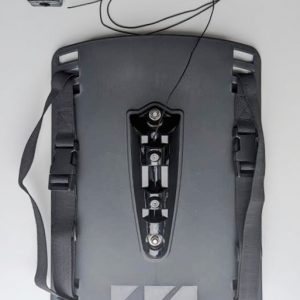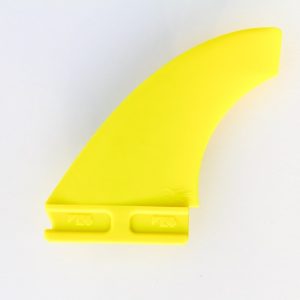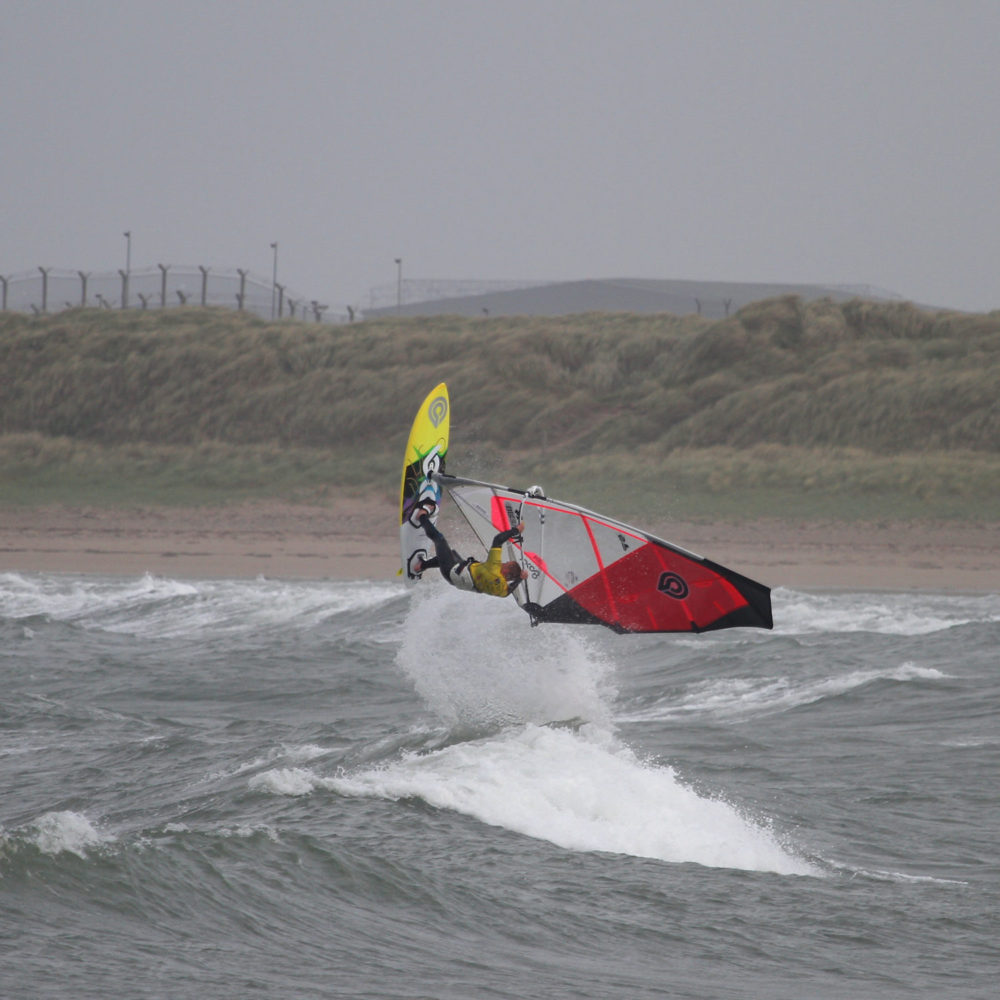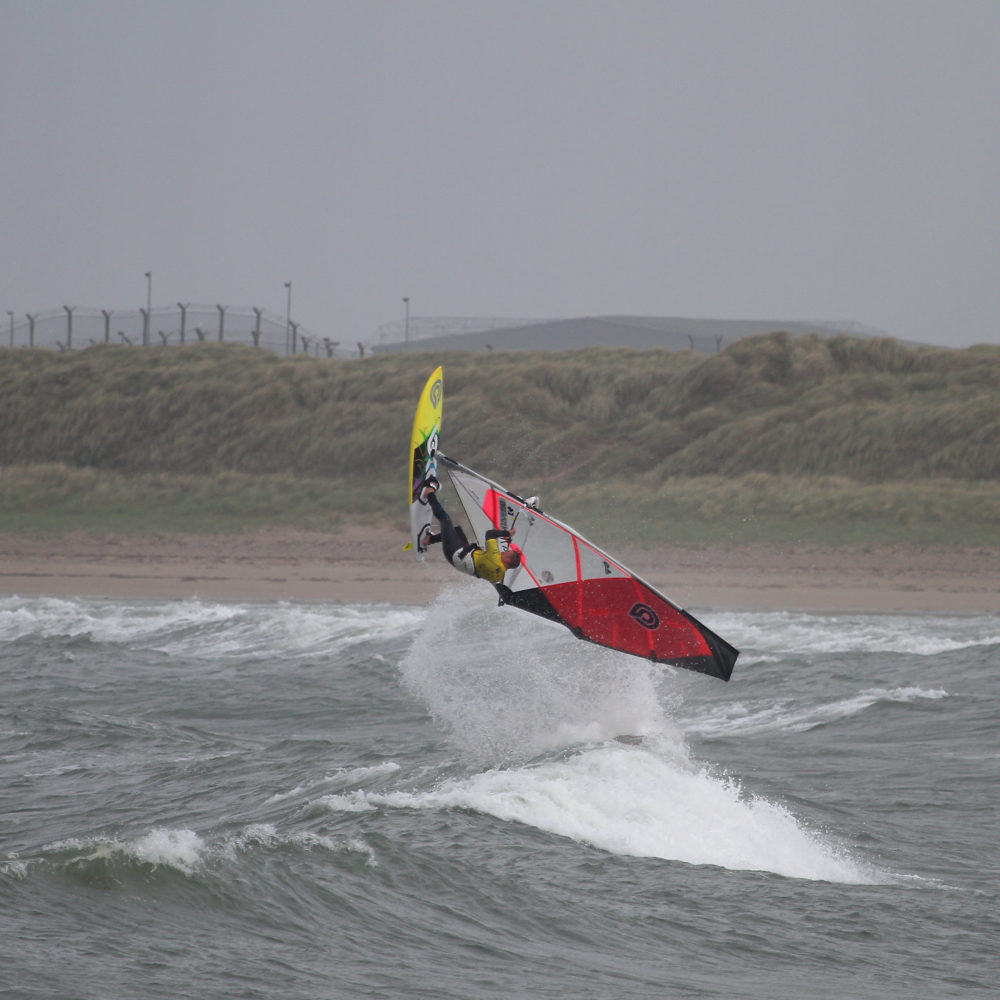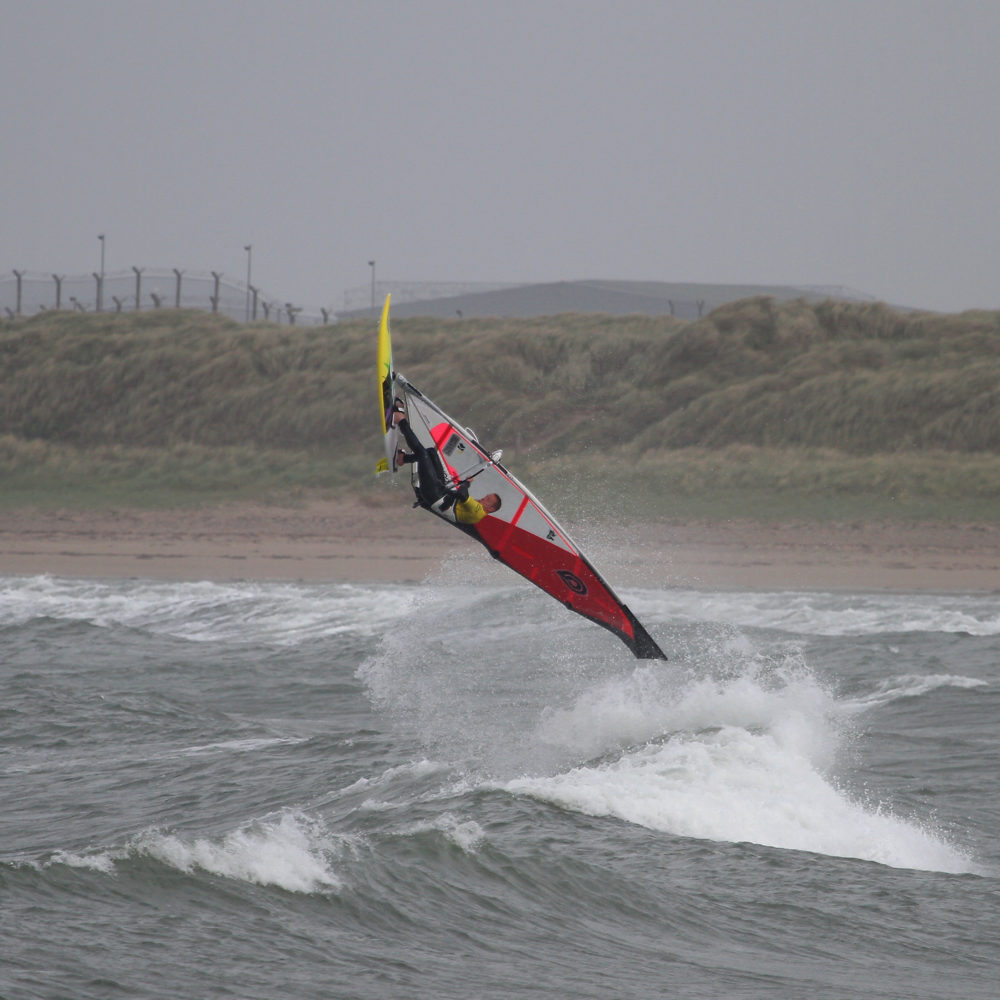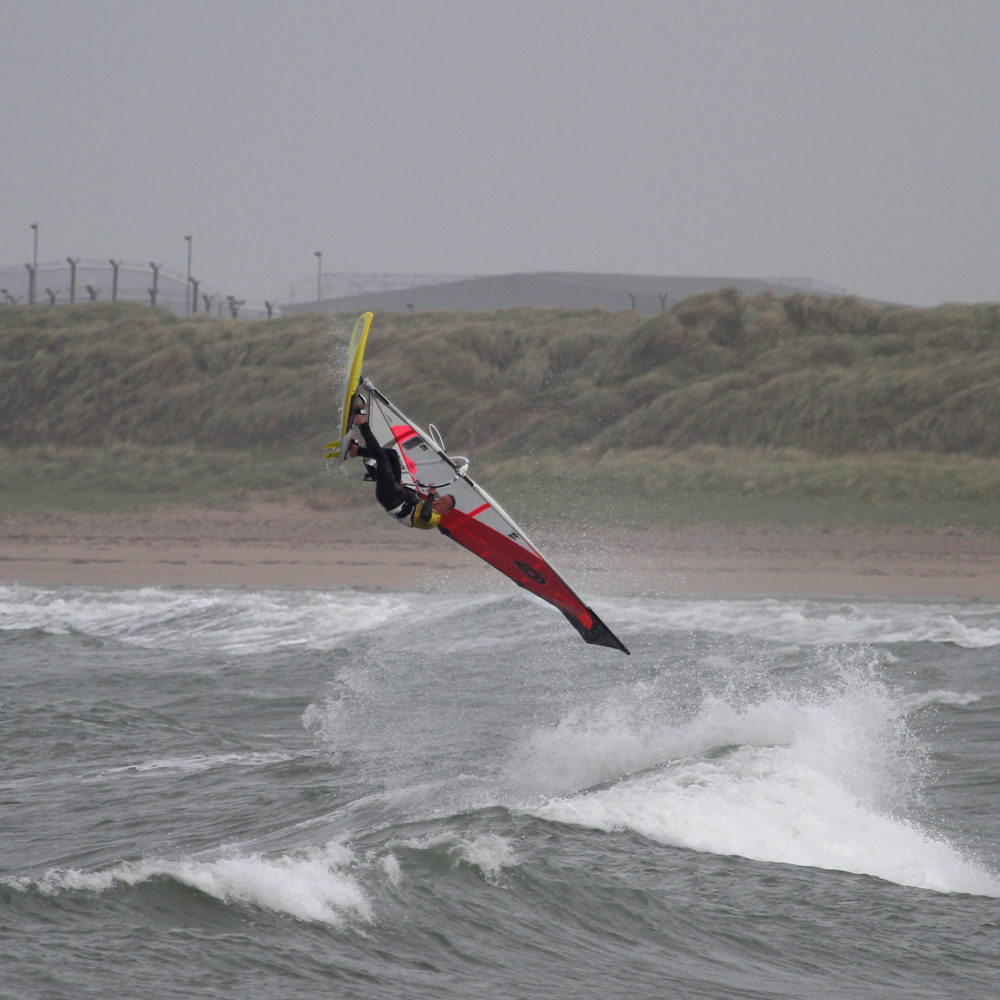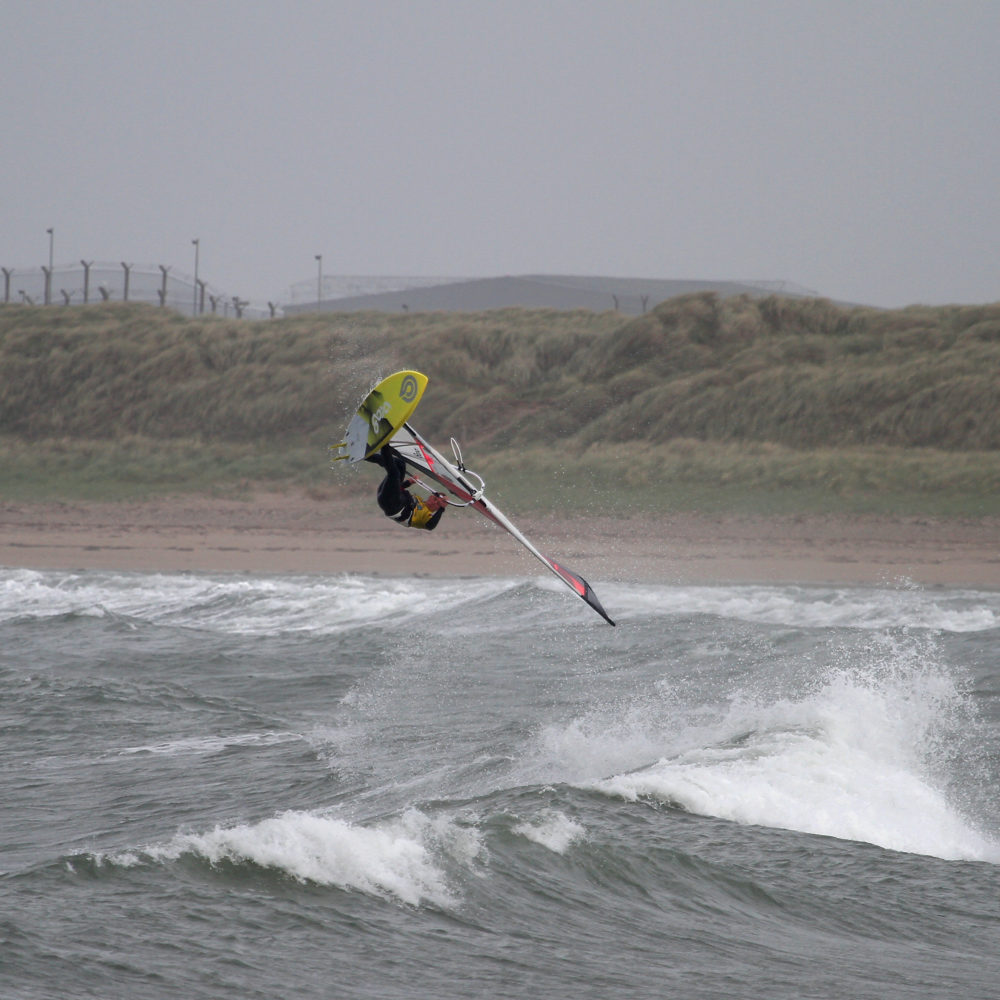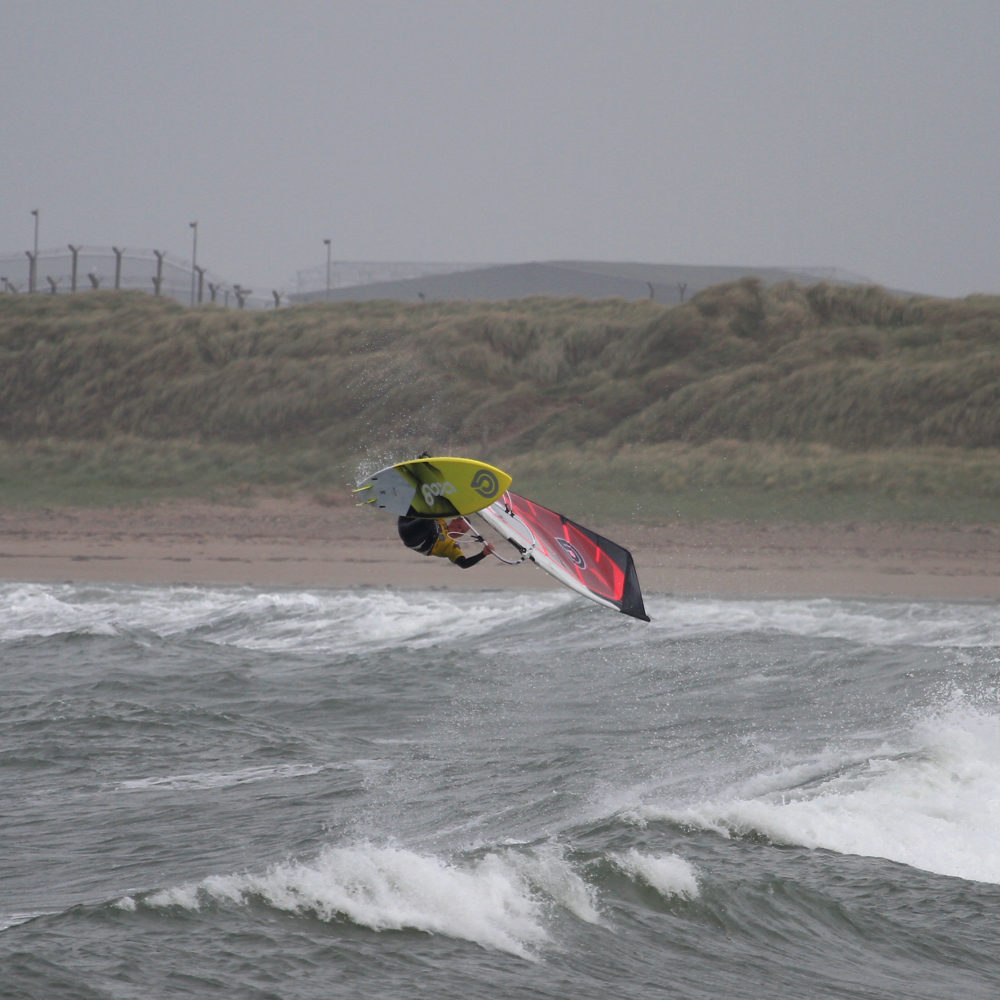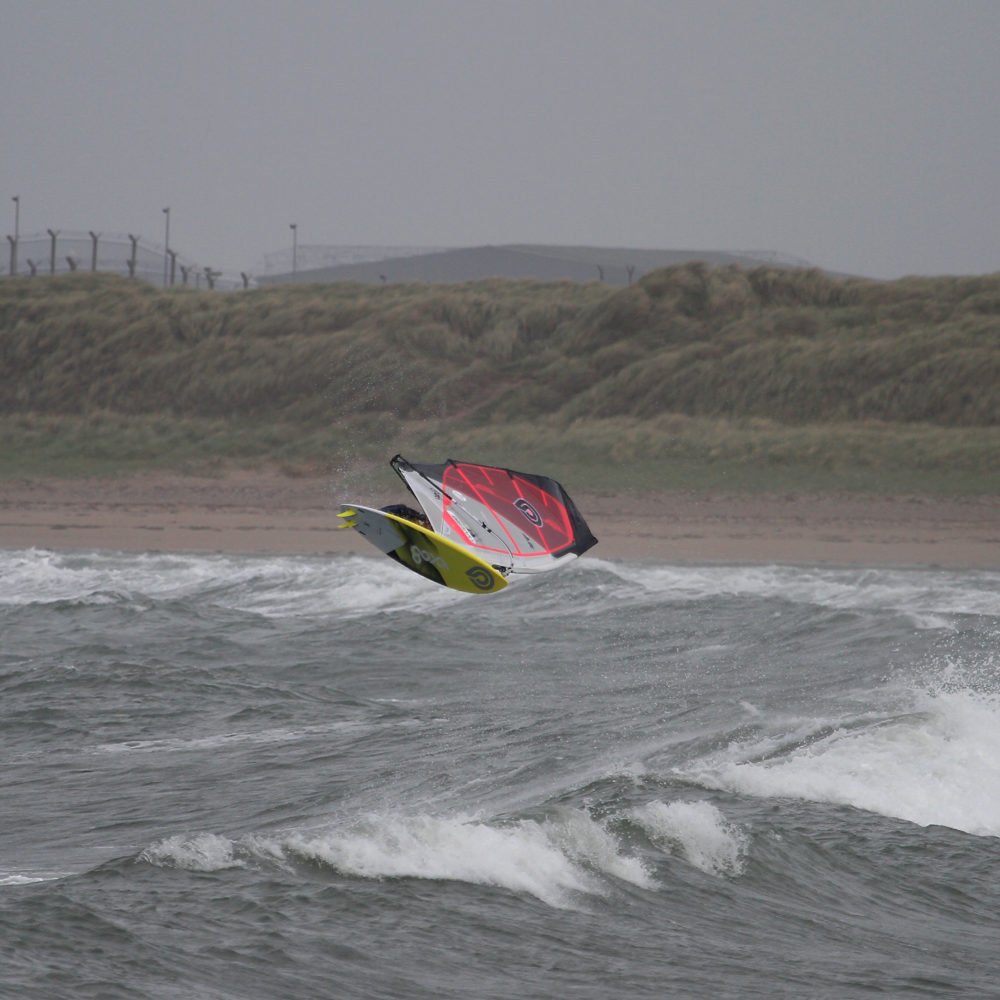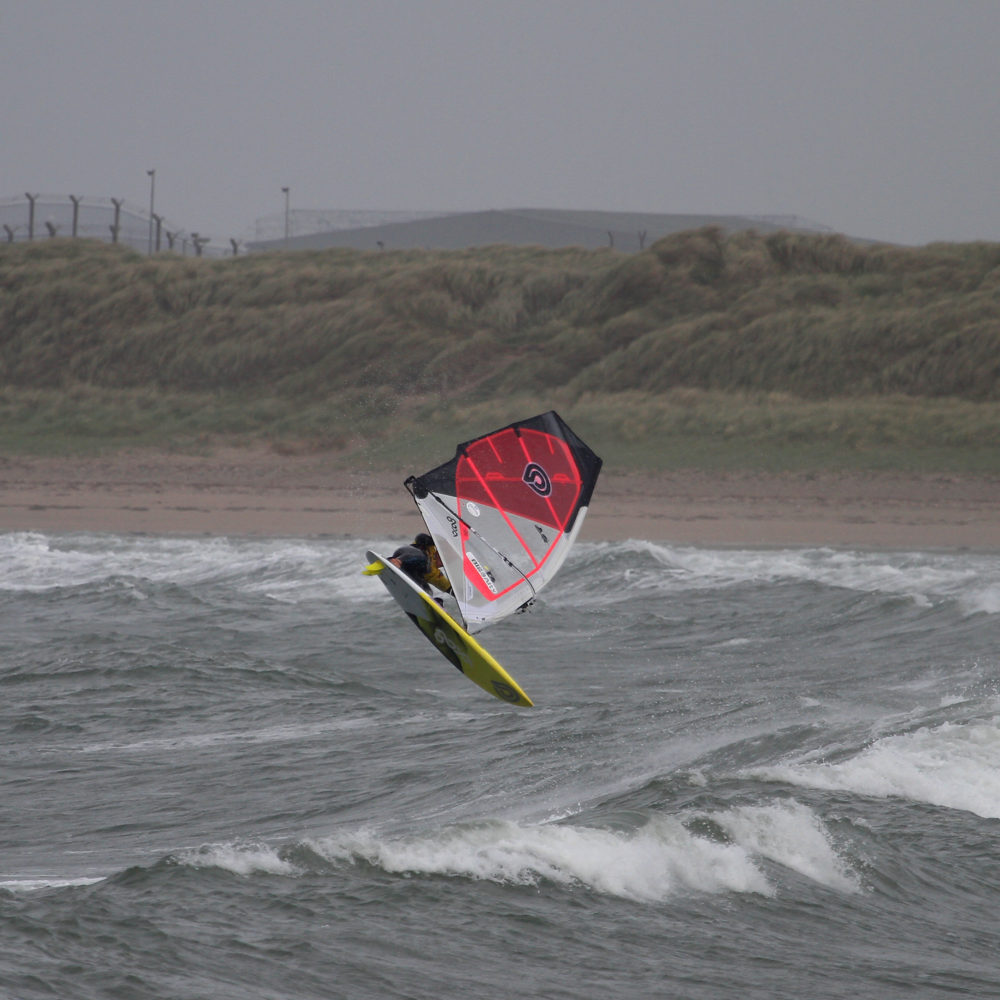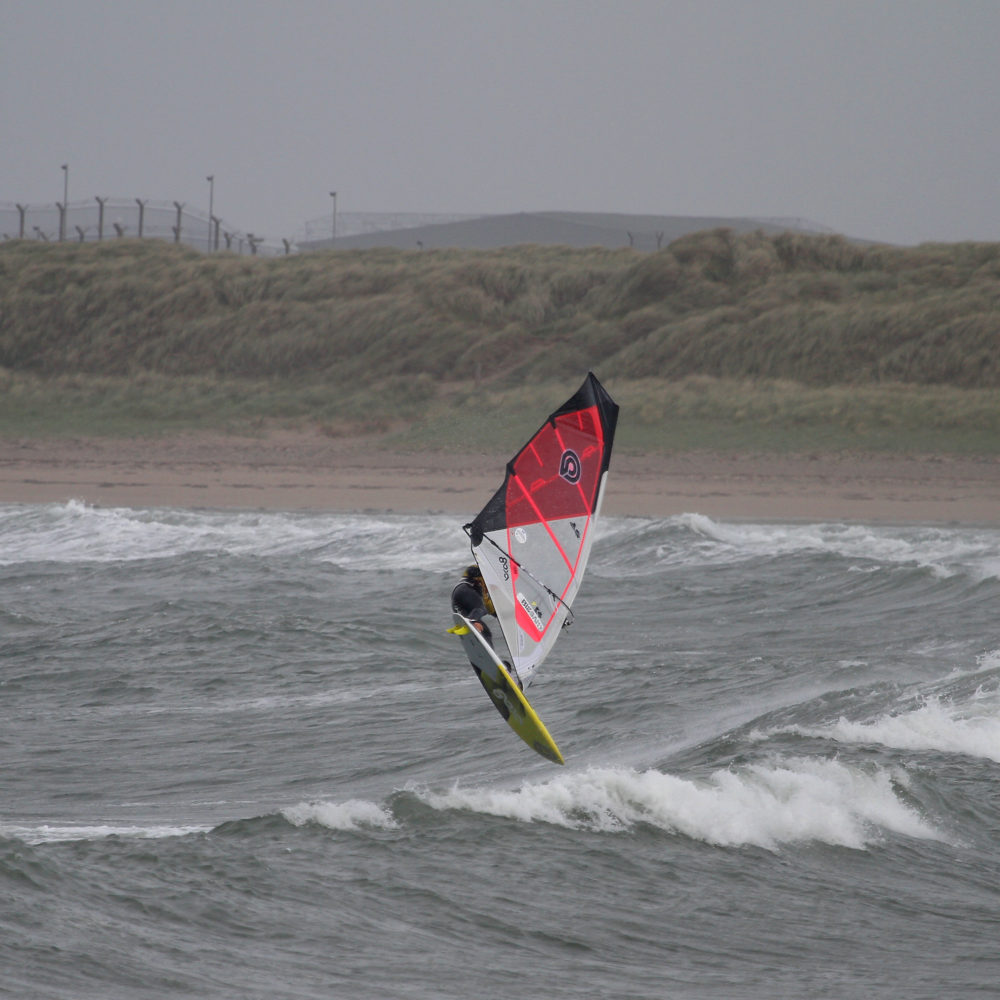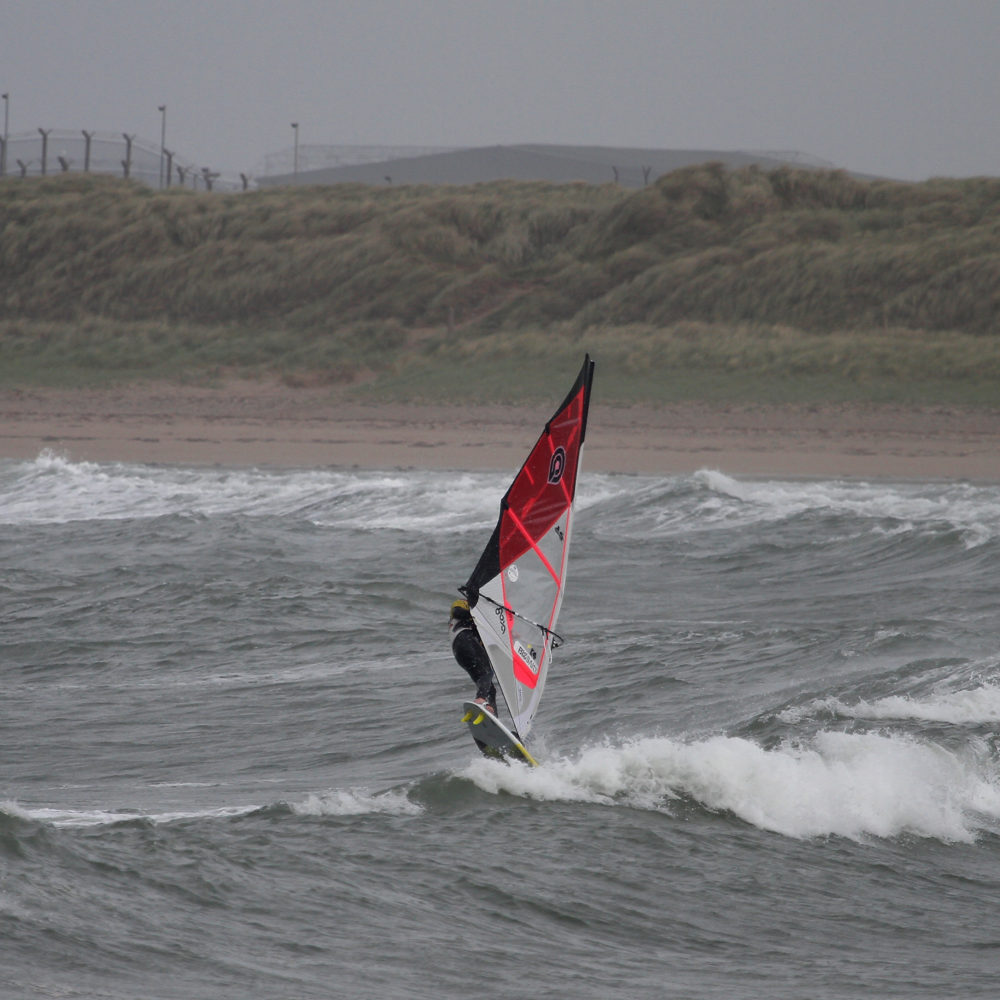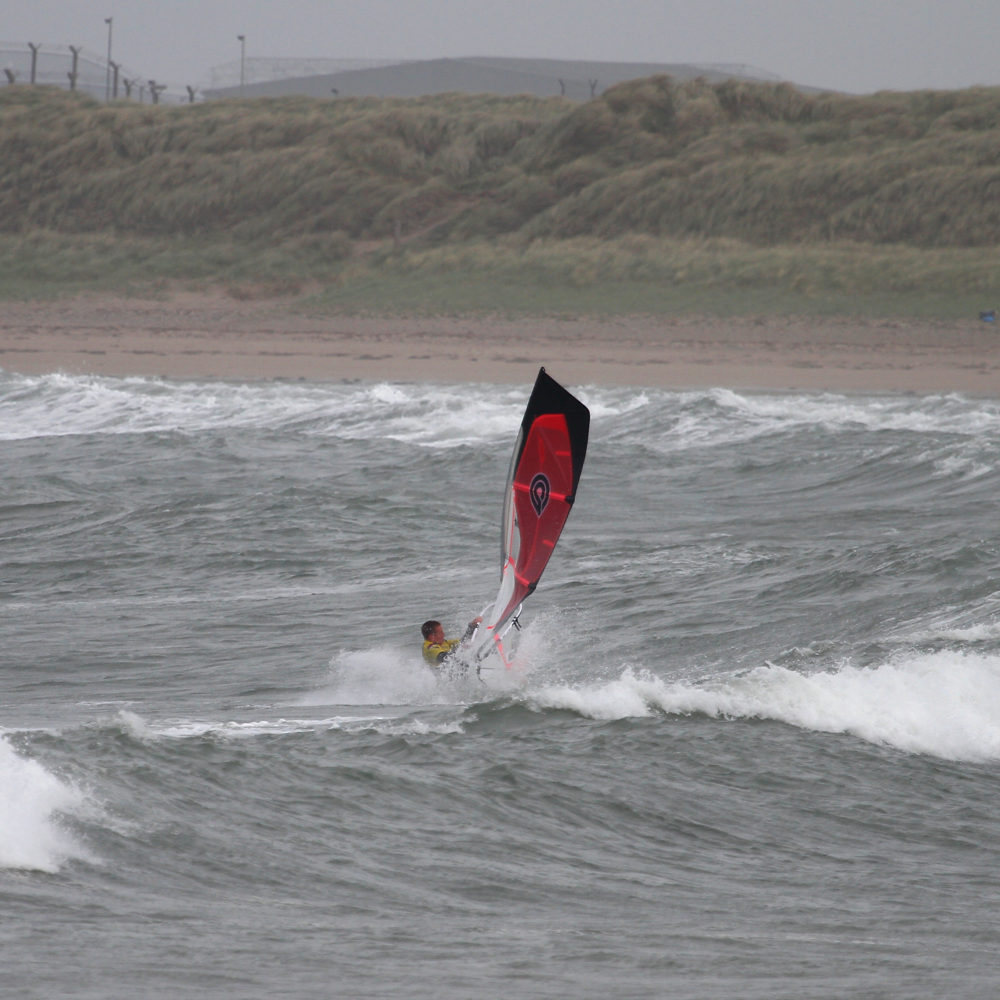
The back loop with Andy King.
Anyone who knows me knows I love back loops. It’s a great move and it takes real technique to pull them off consistently. This tutorial gives a solid guide as to what you should do to enter the back loop safely and ideally with some success. Technique is king here, so watch the videos, read the guides and enter the move with commitment and no doubt you’ll come out smiling.
First up:
When learning to back loop, you want to avoid being too powered up. Apply plenty of down haul to your sail to ensure the leech can twist and perhaps try using a bigger board so as to allow you to plane with a smaller sail that will prove to be much easier to handle on landing.
Ideal sail size would be 5.0m and medium to large wave board.
Ideal wind 20knts side shore.
Shoulder to head high 2-3ft waves.
Next:
Before attempting to back loop ensure you can comfortably jump up tight to the wind. Try to jump right up into wind and hold yourself there before bringing your self back across the wind to land. Make sure you practice sheeting in on your ascent to maximise your height and try to straighten your front leg whilst tucking in your back leg tight under your backside. Start using you head to lead you into the jump and to spot your landing, as this is essential practice for the back loop.
One other move that can assist you with the final stage of the back loop is the “upwind 360 in the straps”. The final stage of the upwind 360 when the wind refills the original side of the sail can be very similar to the end of a back loop. You basically have the wind rapidly refilling the sail after it has passed through the eye of the wind. Remember to spread your hands, to lower your body weight and to use your head to lead your body, i.e. hips and shoulders, in returning to the original sailing line.
The two keys to successfully landing back loops are to eliminate all your forward motion and to empty the sail of all its power. To do this you need to pick a pretty vertical wave for take off and to sheet in fully as you jump. You use up all the power in the sail by sheeting in to gain extra lift on the way up, therefore leaving your sail light and neutral as you pass through the wind and drop in to land nose first. If you can lose all your forward momentum before coming into land then you can drop in nose first on a virtual down wind run from any height. This means that you actually rotate considerably less then 360 degrees and therefore reduces your chances of over rotating.
Part one (Same as jumping tight to wind):
Approach the wave with all the board speed you can achieve (any slowing prior to take off will only lead to a build up of extra power in the sail that will hinder your rotation). Hit the steepest section of the wave and sheet in to gain as much vertical height as possible. Your boom should be close to your chest, as you stay sheeted right in. Straighten your front leg whilst bending and tucking your rear leg, pointing the boards nose high into the sky. Use your head to look up at the sky way above your leading shoulder. Stay sheeted in and committed to this position until you feel yourself going weightless as you reach the apex of the jump. Gravity will quickly take effect and return you to the water rather ungraciously so you have to be ready to react quickly at this point.
Part Two (Use your Head!):
As gravity takes effect and you begin to fall you need to use your head to look back over your front shoulder at the water down behind. This is referred to as “spotting your landing”. This head movement will lead your shoulders, which in turn lead your hips. This weight shift will begin to rotate you and your kit through the wind. Keep your legs as they were and stay sheeted in. As you have pass through the eye of the wind you need to give your sail a quick pump. This allows the leech to open up immediately and to work efficiently when discarding any unwanted power on landing. After the pump you can now sheet out gently and extend both your arms to move the rig away from your body. Now apply a significant downward force through the boom with both hands to drive the board down into the water nose first. Keep your front leg extended as you come in to touch down and only straighten your rear leg once the nose of the board has hit the water. When learning to back loop you can increase your chances of making the move by ensuring that you squat your body down low as you land. Later as you get more experienced you can work on landing more upright.
Now here is where your upwind 360 practice will come in handy. You will land on a run and only the perfect timing will see you plane away so more likely than not you will come to a halt up to your knees in the water. As you’re on a run the sail will power up and try to pull you with it down wind. You need to twist your hips as soon as you land so as to make it easier to resist this pull. Also look where you want to go, i.e. back out to see, as this will encourage your shoulder and hips to follow your head.
Common problem: Over rotating
Common causes: keeping too much forward momentum or throwing yourself into the rotation.
How to solve this: pick steeper ramps with the aim to pinching tight into the wind –
Concentrate on jumping tight to the wind and slowly rotating on the way down
Common problem: Getting pulled over onto your sail when landing
Common cause: Staying too upright on landing and remaining facing your sail on a run.
How to solve this: Remember to act quickly on landing, to twist your hips and shoulders so that you can resist the pull in the sail and transfer this into forward motion!
Now watch Andy perform some clean backies from the great perspective of the Flymount
Finally… watch Andy back loop off chop! (filmed with Gopro + Flymount again)

